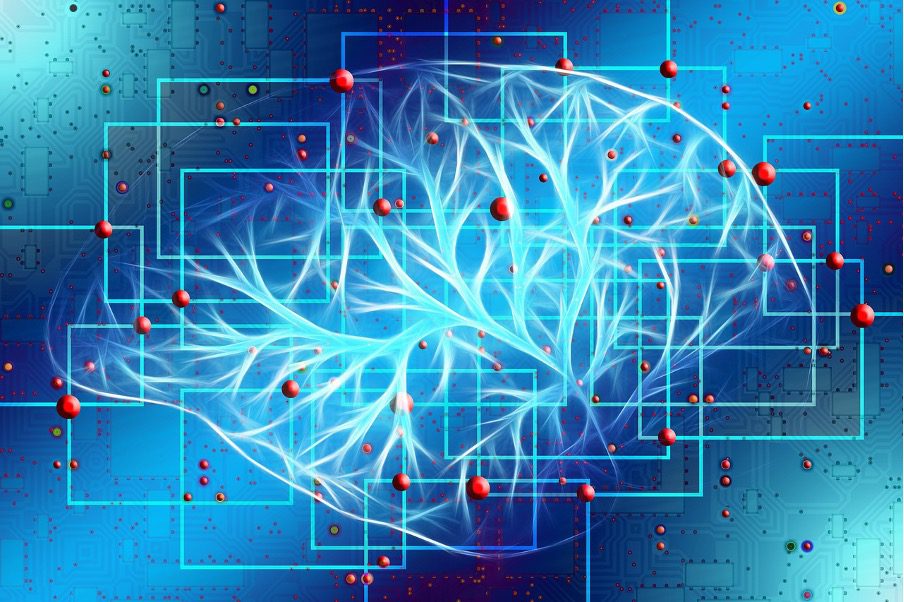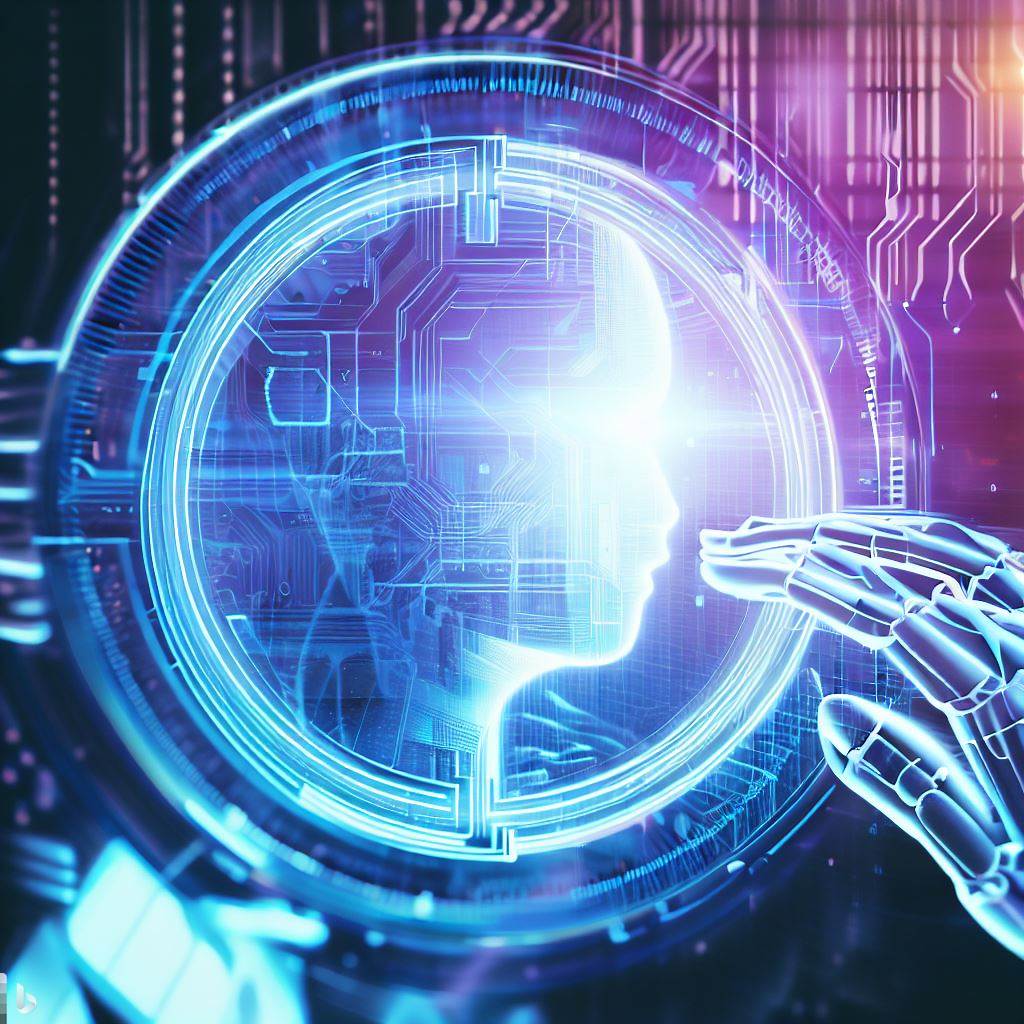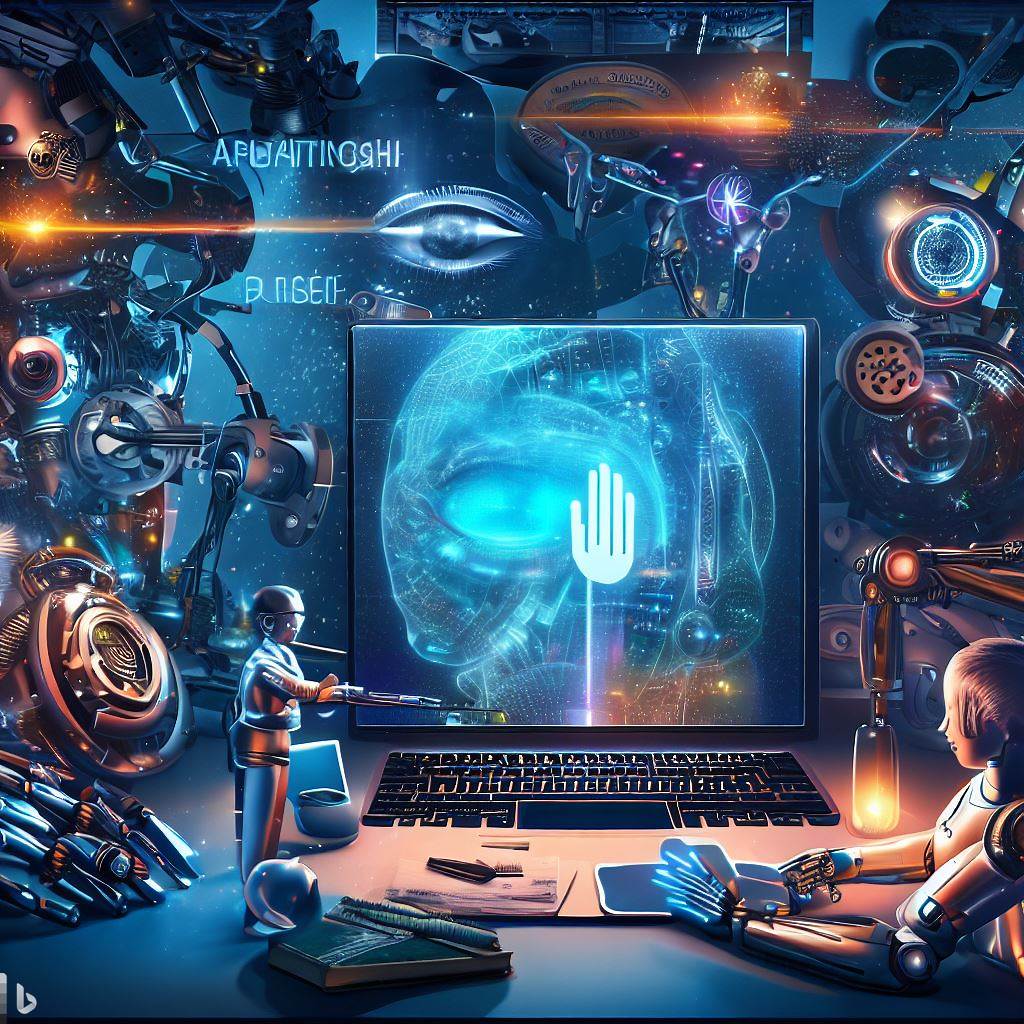Introduction
- 1 What is open source?
- 2 Open source vs closed source
- 3 What is generative AI?
- 4 Is OpenAI open source?
- 5 What about Google’s Bard and Anthropic’s Claude?
- 6 Does Facebook (Meta) have a generative AI model?
- 7 Google says it can’t compete against open source
- 8 What open source AI projects are there?
- 9 The impact of open source on the future of AI
- 10 What does the future of open source AI look like?
- 11 Conclusion: the road ahead for open source and AI
As the world continues to advance technologically, the future of AI is poised to revolutionise industries and redefine the way we live, work, and interact.
With names like ChatGPT and Bard becoming commonplace, open source AI models like LLaMA have been hiding in the shadows for most of us whilst slowly emerging as a key player in shaping the future of AI.

Since our inception in 2008, Opace has remained focused on the principles of open source, helping businesses to grow by adopting open source solutions. Very early on, we fell almost by accident into the world of web and eCommerce development, specialising in open source platforms like WordPress, Magento, and Joomla.
Recently, the technology landscape has experienced rapid changes, with AI-powered solutions like ChatGPT taking centre stage. The race between tech giants like Microsoft and Google to dominate the AI space has been exciting and we’ve been closely monitoring the developments of both ChatGPT and Bard.
However, it’s becoming increasingly apparent that the real winner in this race might be open source AI.
This comprehensive overview will explore prominent models like GPT-3 and GPT-4, the impact of open source in the AI landscape, its influence on generative AI, and the potential it holds for the future of AI.
What is open source?
We’ll keep this brief but open source refers to a software development style where the source code of a software or technology is made freely available to the public. This allows other developers and users to access, modify, and distribute the source code.
However, open source is really much more than just software, code and technology. It’s the principle, mindset or belief that working together in an open, collaborative and transparent way is better than competing with each other in a closed market.
Of course, the term “open source” is mainly considered in relation to software and large communities of contributors working together to improve and enhance the software, making it more reliable, secure, and innovative.
Open source vs closed source
Closed source, also known as proprietary software, refers to software whose source code is not made publicly available.
In this case, the software is owned and controlled by a company or individual, and users are typically restricted from modifying or redistributing the software. Significant brand names that are associated with closed source include Microsoft, Apple and Adobe. That said, many of these players have dabbled with or are gradually entering the world of open source, which we’ll explore below.
What is generative AI?
In the context of this guide, when referring to AI, we’re mainly talking about generative AI. This refers to a class of artificial intelligence models that can generate new data based on the patterns and structures they’ve learned from existing data.
These models are capable of creating original content, such as images, text, or even music, by analysing and understanding the underlying patterns in the input data.
Some popular examples of generative AI models include GPT-3, GPT-4, and DALL-E.
Is OpenAI open source?
The organisation behind the popular ChatGPT tool and the GPT-3 and GPT-4 AI models, OpenAI, originally embraced an open source philosophy.

From open source to closed source and back again.
However, due to concerns about the potential misuse of these AI models and competition fears, OpenAI has gradually shifted toward a more closed approach. The following article provides an interesting story covering OpenAI’s journey from open source to closed source.
While they continue to collaborate with the research community, their most prominent AI models are not open source.However, recent news suggests this may be all about to change again, bringing OpenAI full circle back to where they started.
Are OpenAI models like ChatGPT, GPT-3, GPT-4, and DALL-E open source?
OpenAI have released some open source models including Point-E, Whisper, Jukebox, and CLIP but these are unlikely to be well known by most of us.
The OpenAI models that commonly get discussed are ChatGPT, GPT-3, GPT-4, and DALL-E, none of which are fully open source.
While they have released limited access to these models through APIs and research collaborations, the underlying source code and training data are not publicly available.
What about Google’s Bard and Anthropic’s Claude?
Bard, developed by Google’s DeepMind, is also not open source. Like OpenAI, Google has kept the source code and training data of its AI models closed to the public. Claude AI, developed by Anthropic, follows a similar trend as OpenAI and Google’s DeepMind, with its source code and training data not being open source.
Does Facebook (Meta) have a generative AI model?
Meta, formerly known as Facebook, has developed a large language model (LLM) called LLaMA. Released in February 2023, LLaMA has been shown to outperform other models like GPT-3, despite having fewer parameters. t has been designed to offer developers a more flexible and adaptable option for their AI projects.
Although it was initially released on a case-by-case basis to researchers, the full model was later leaked online, making it accessible to the public.
Meta AI’s LLaMA: a game-changer for developers
LLaMA has been trained on a massive 1.4 trillion tokens dataset, which includes web pages, open-source code repositories, Wikipedia articles, public domain books, and scientific paper sources. It comes in various sizes ranging from 7 billion to 65 billion parameters, making it suitable for diverse applications and use cases.
The developers of LLaMA focused on scaling the model’s performance by increasing the volume of training data rather than the number of parameters, making it an efficient and powerful AI tool.
Is LLaMA open source?
Initially, LLaMA was only available to approved researchers and organisations. However, when its model weights were leaked online in early March 2023, it effectively became open source and has emerged as a prime example of the power of open source in generative AI.
The open source nature of LLaMA has attracted many developers and gained significant attention in the AI research community. It has become a foundation for numerous open source AI projects, demonstrating the potential of open source to drive innovation, compete with and surpass closed-source AI models. So much so, that even Google is now worried.
Google says it can’t compete against open source
In a leaked internal memo, a Google employee acknowledged that the company is struggling to compete against open source AI models.
The memo highlighted the rapid pace of innovation in the open source community and the advantages of open source models in terms of cost, customisation, and accessibility:
“We’ve done a lot of looking over our shoulders at OpenAI. Who will cross the next milestone? What will the next move be?
But the uncomfortable truth is, we aren’t positioned to win this arms race and neither is OpenAI. While we’ve been squabbling, a third faction has been quietly eating our lunch.
I’m talking, of course, about open source.
Plainly put, they are lapping us. Things we consider “major open problems” are solved and in people’s hands today.”
The memo continues:
“While our models still hold a slight edge in terms of quality, the gap is closing astonishingly quickly.
Open-source models are faster, more customizable, more private, and pound-for-pound more capable.
They are doing things with $100 and 13B params that we struggle with at $10M and 540B.
And they are doing so in weeks, not months.”
Much like recent news of OpenAI releasing an open source model, this revelation has led to speculation that Google might consider embracing open source strategies in the future to regain its competitive edge in the AI space.
What open source AI projects are there?
Several new open source AI projects have emerged in recent years, driven by the growing demand for accessible and transparent AI solutions. Some noteworthy examples include:
- Hugging Face & BLOOM – New York City-based AI company Hugging Face has collaborated with over 1,000 volunteer researchers to develop BLOOM, an open source LLM partially funded by the French government. BLOOM aims to provide a more transparent and accessible alternative to proprietary AI models.
- Together – This AI startup has raised $20 million in seed funding to support its mission of creating decentralised alternatives to closed AI systems and democratising AI for everyone. The company has already released several generative AI open source projects, such as GPT-JT, OpenChatKit, and RedPajama.
- Stability AI– In April 2023, Stability AI launched StableLM, a series of open-source alternatives to ChatGPT. The company’s goal is to make computational resources for training, fine-tuning, and operating large models more accessible.
These projects, among others, demonstrate the growing interest and potential of open source AI.
The impact of open source on the future of AI
The growth of open source is a direct response to the need for more transparency, collaboration, and accessibility in the AI development process.
Challenging the dominance of tech giants
Traditionally, AI technology has been controlled by a small number of tech giants. However, as the AI landscape evolves towards the future of AI, the demand for more open and accessible AI solutions has become evident.
Enhanced adoption and innovation
Open source AI projects like those mentioned above enable developers from around the world to collaborate, innovate and advance the field at a faster pace than ever before.
By making AI technology freely available, open source AI projects will help to level the playing field and allow individuals and organisations of all sizes to harness the power of AI. This is particularly important in industries such as healthcare, education, and environmental conservation, where AI has the potential to make a significant impact but may be out of reach for smaller organisations without access to open source AI solutions.
Greater transparency and accountability
With proprietary and closed source AI models, developers and researchers have limited visibility into the underlying code and data, making it difficult to assess the models’ fairness, reliability, and potential biases.
In contrast, open source AI projects make their code and data openly available, allowing for independent inspection and verification. By making the inner workings of AI models available for inspection, open source AI projects enable researchers to identify potential biases, privacy concerns, and other ethical issues, ultimately leading to the creation of more responsible and robust AI technologies.
But also challenges in terms of quality, security and privacy
While open source offers many advantages for AI, it also presents challenges relating to the quality and security of the AI software being released.
By making AI projects accessible to anyone, there is potential for malicious actors to tamper with the code, introduce vulnerabilities and even security issues. To mitigate these risks, open source AI projects must implement rigorous quality assurance processes and establish robust security protocols to safeguard their technology.
Another challenge facing open source AI is balancing openness and privacy. AI models often rely on vast amounts of data for training and fine-tuning, and some of this data may be sensitive or subject to privacy regulations – and the topic of hot debate recently.
Open source AI projects must navigate the delicate balance between making their models and data openly available while also protecting user privacy and adhering to relevant data protection laws.
What does the future of open source AI look like?
Despite the challenges of open source, the benefits always carry greater weight and it’s clear that open source models like LLaMA have the potential to outpace the closed source models from tech giants like Google and OpenAI.
The future of open source and AI is definitely exciting, with more researchers, developers and larger players getting on board with the benefits of open source.

Generative AI: open source will take centre stage
With generative AI models like LLaMA becoming fully open source, this gives developers unprecedented access to fine-tune its weights and create more advanced natural language interactions in applications like chatbots and virtual assistants.
Compared to other popular models like Open AI’s GPT and Google’s LaMDA, LLaMA offers developers significantly more customisation options due to its open-source nature. This adaptability allows developers to create AI applications tailored to their specific needs.
For this reason, we expect to see open source taking centre stage.
More open source projects will appear
The open-source nature of LLaMA has led to the development of numerous AI projects and tools by the AI community.
Projects such as RedPajama have demonstrated the potential of open source generative AI models, driving innovation in new directions and fostering a vibrant AI ecosystem.
Decentralised computing networks, such as those used by startup Together, aim to provide more efficient and accessible computing infrastructure for training and using AI models.
New partnerships will lead to greater innovation
More companies will partner with open source groups, corporate research labs, and decentralised infrastructure providers.
By improving access to computing resources for training, fine-tuning, and running large models, these collaborations help address key bottlenecks in the development of AI technologies and pave the way for future innovations.
Developers will become skilled in LLMs
As AI becomes increasingly integrated into business applications and workflows, developers will need to understand how to use LLMs to improve their work.
While fine-tuning LLaMA and other open-source models may be a specialised skill right now, the future of AI will involve developers implementing AI models into existing business processes and applications to harness the power of AI.
Closed source AI will become open source
As open source AI projects and models gain momentum and support, they will likely continue to challenge the dominance of closed source models, driving further innovation, transparency, and accessibility in the AI space.
It’s very likely that the tech giants will concede to open source and make their own models publically available.
Conclusion: the road ahead for open source and AI
With the open source community’s ability to innovate rapidly, collaborate globally, and lower barriers to entry, it’s a formidable contender in the race for AI dominance.
As more and more developers and organisations embrace the principles of open source and international collaboration in AI development, this will only further accelerate the adoption and growth of AI. Whether LLaMA wins the race or another party, it very much looks as though open source will be at the heart of things.
AI is already playing a more pervasive role in our daily lives, with applications ranging from personalised virtual assistants to gaming worlds and advanced healthcare diagnostics and beyond. With the vast changes that have happened in the short space of time from late 2022 to the present, it’s hard to imagine the future of AI and open source being anything less than central to our daily lives.
By fostering an open and participatory AI ecosystem, the future of AI promises a world where innovation is collaborative, knowledge is shared, and the benefits of AI are enjoyed by all.
What are your thoughts? Please share your feedback and comments below or join us on social media to discuss.

![Seo content creation guide for good content - why good content matters: seo content creation guidelines [updated] Seo content creation guidelines for good content](https://www.opace.co.uk/wp-content/uploads/2024/03/SEO-content-creation-guide-for-good-content-150x150.jpeg)




0 Comments